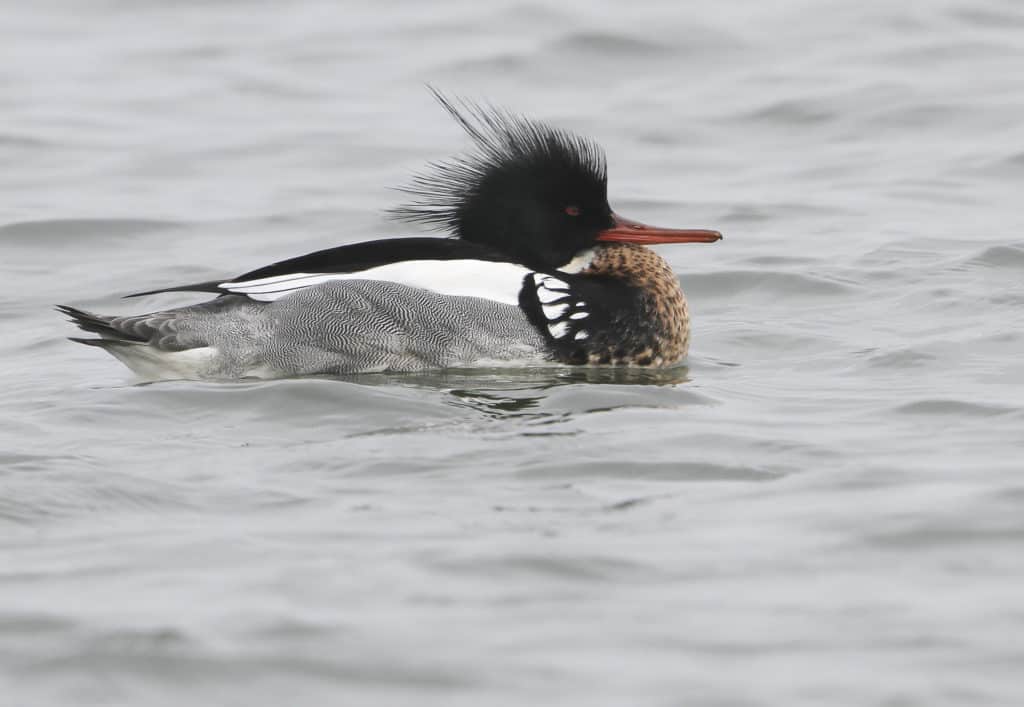Creature Feature

A Wild Looking Duck
By Wayne Bierbaum
Swimming alongside the rock jetty at Barnegat Inlet, New Jersey, a duck nervously looked from side to side making the long dark feathers poking up from the top of his head flop from side to side. The bird appeared quite comical as the nervous motion quickened, but then it suddenly dove and disappeared. The bird reappeared about 20 yards away with a fish. It dove over and over and was frequently successful at catching small sculpin and blennies. Each time it surfaced, it would shake the water off its head and look in all directions before diving again.
Since the fish it caught are bottom dwellers, the bird must have dove at least 10 feet against a strong current to catch them. When it finally flew off, it took a long running start on the water’s surface.
The bird was a red-breasted merganser. Their scientific name is Mergus serrator, which describes the sharp serrations in their bill that are used to hold onto slippery fish.
Their legs are set far back on their bodies, like a loon. That makes them excellent at diving but very awkward at walking and needing a running start to fly. The males have a dark green head with a white ring on the neck. The females have a brown head and body with very little white details except on the mid-wing. Both sexeshave long pointed reddish serrated beaks and long feathers that stick straight up from their heads. Their appearance gives them the nicknames of saw-bill and shag-head. They fly laid out straight like an arrow with their pointy beaks out front, giving them another nickname: lawn dart.
Cornell Lab of Ornithology lists the red-breasted merganser as the fastest flyer of all the fish-eating ducks. They also spend their summers the farthest north and migrate the farthest south of other American mergansers. In the summer, they nest and fish along northern Canada’s coastal estuaries and lakes.
Merganser couples pair up in the early spring and the female builds a nest in shoreline grasses. She can have up to 12 little ones hatch, which she rears by herself. The mother escorts the young birds away from danger and into areas of water with plentiful food and stays with them through their first migration south.
Mergansers are not considered good to eat but because they fly so fast, they are hunted for sport. Hunting is allowed because the ducks are not listed as endangered. However, they are not that commonly seen around the Chesapeake shore.
A few red-breasted mergansers will occasionally be found around North Beach, Thomas Point and Sandy Point. They are more commonly seen around the Ocean City inlet. Keep a look out for them, as they can show up on almost any body of water, fresh and salt. Their hairstyle gives them away.
